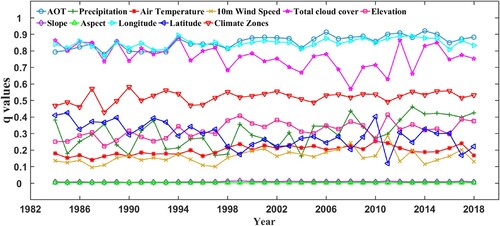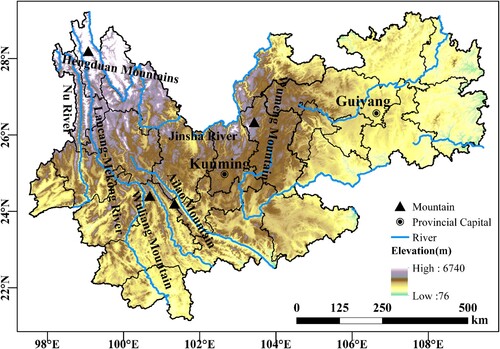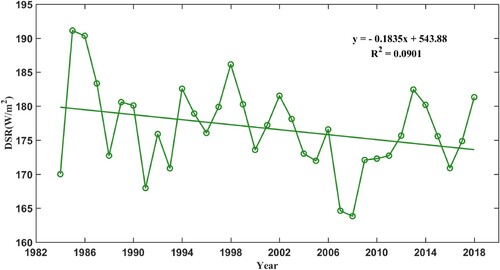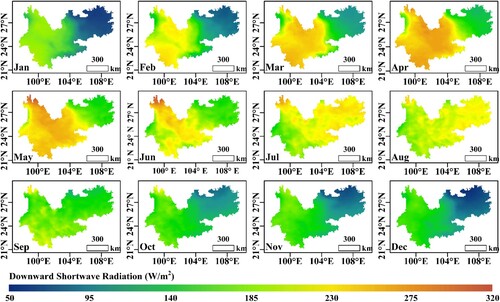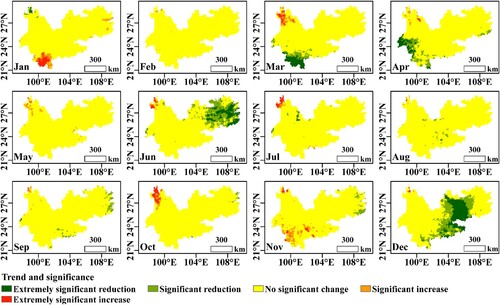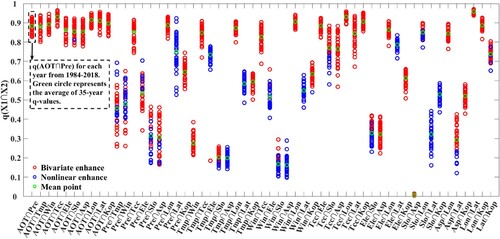Figures & data
Table 1. Categories of trend significance for Mann-Kendall test.
Table 2. Types of interaction between two different driving factors.
Figure 2. (a) Spatial distribution and (b) change trend of annual averaged DSR over the YKP from 1984 to 2018.

Figure 4. The spatial distribution and variability trends of seasonal averaged DSR over the YKP from 1984 to 2018.

Figure 8. Trends in mean values of monthly averaged DSR over the YKP from 1984 to 2018, where the 12 months are shown separately by four seasons.
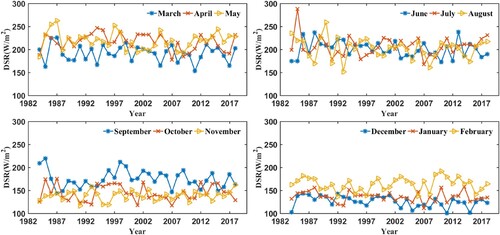
Figure 9. Detecting structural changes in both trend and seasonal components of daily averaged DSR over the YKP from 1984 to 2018. The dashed lines represent the breakpoint occurred, and the date of the breakpoint is marked by Julius Day and year.
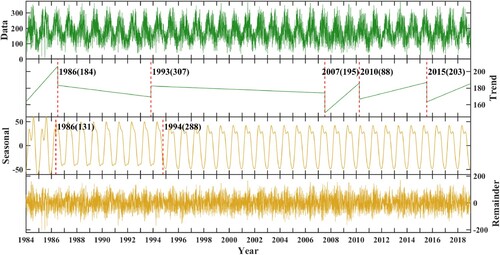
Figure 10. Interannual variations of q values of driving factors on the spatial heterogeneity of DSR over the YKP from 1984 to 2018.
